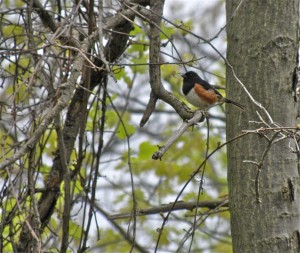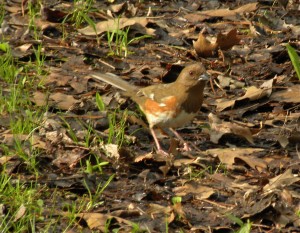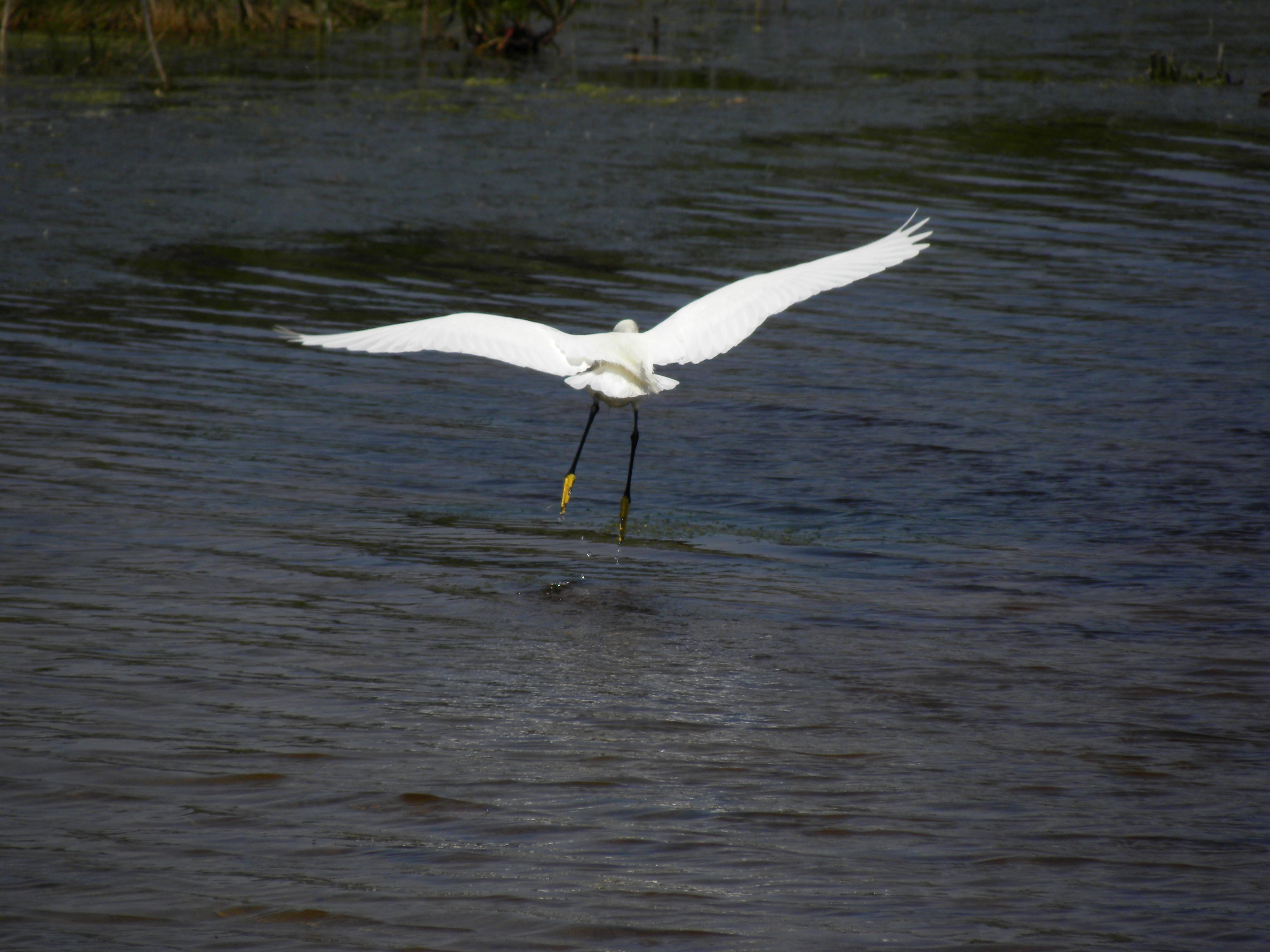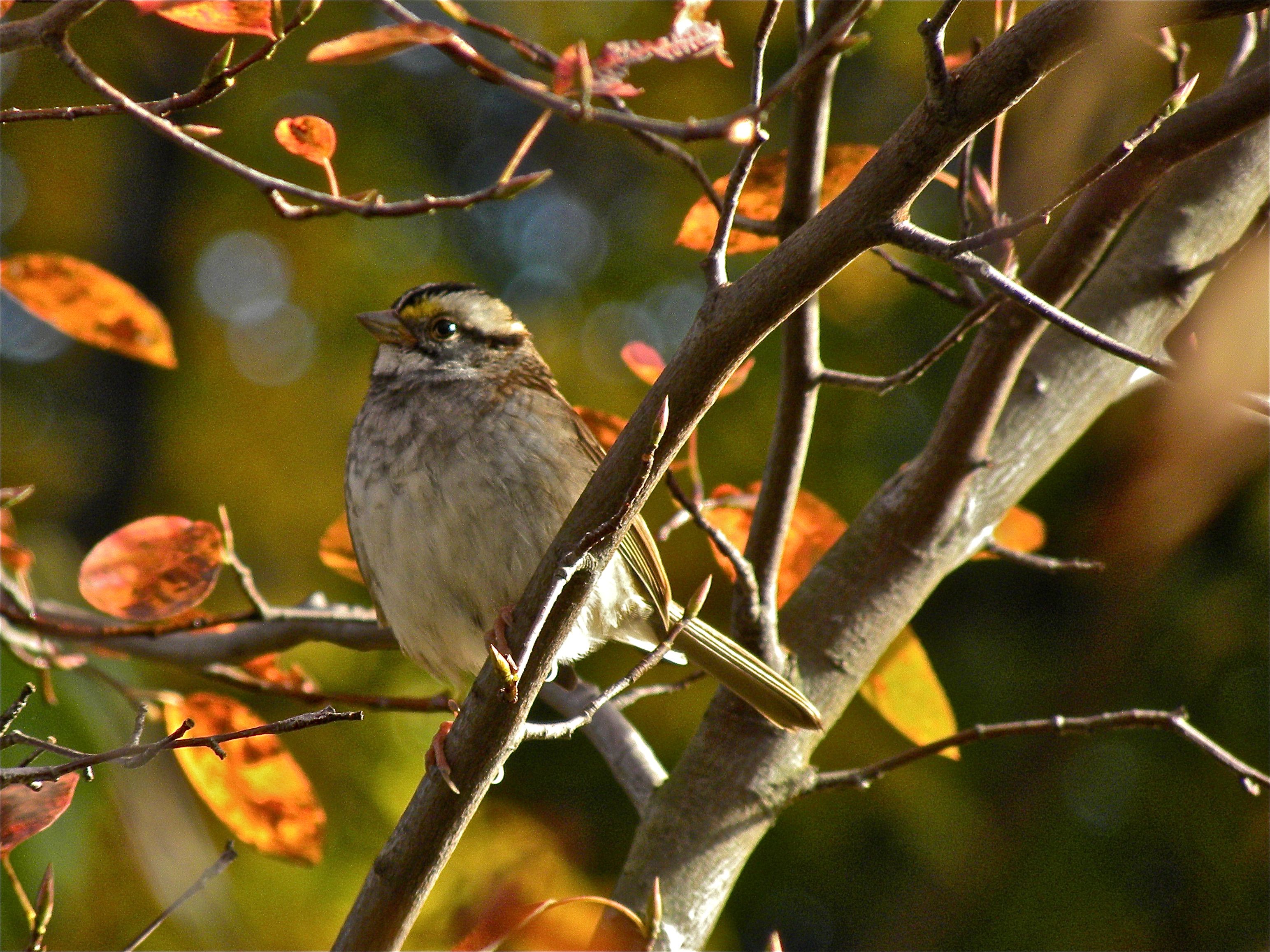December 13 2012. Hamilton Harbour, ON. I have often reported birds found in what I have anonymously and variously described as ‘the bay’ or ‘the harbour’. To demystify things a bit, I’m referring to a large, triangular, enclosed body of water known by some as Hamilton Harbour and by others as Burlington Bay; which you use depends on where you live. It is a deep-water harbour surrounded on one side by very heavy industry, on another by pricey homes and on its third by a beach bar that separates it from Lake Ontario and which is now a transportation corridor laced with highways and power transmission lines. It can be seen by clicking here on Google Maps.
The Bay was heavily polluted by industry and urbanization particularly in the first half of the twentieth century (although we’re scarcely blameless today) but serious and extensive, expensive remediation efforts are making significant improvements. It is a sheltered place with areas of clean and shallow water and abundant aquatic plants; a powerful magnet for wintering waterfowl.
Yesterday I stopped at a quiet marina along its shore to see what waterfowl was around, just when you assume nothing much could have changed, a rarity will show up. On the windward side of the marina’s landmass a few hundred heads-tucked-in Lesser Scaup and Rudy Ducks were bobbing in the waves while much closer to shore, Mallards and American Coots seemed offended by me disturbing their midday rest.
Elsewhere the shoreline was crowded with American Black Ducks, Mallards and Mute and Trumpeter Swans. In the distance I could make out Common and Red-breasted Mergansers, Greater and Lesser Scaup and the shine of rich chestnut off the top of some sunlit Redheads. Loafing around a man-made island were a few Tundra Swans calling softly among themselves. As I wandered along the beach a Sharp-shinned Hawk flicked overhead to land in a nearby willow from which it watched me suspiciously.
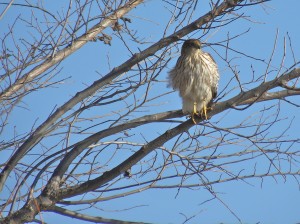
I took some time to review my skills in distinguishing between Tundra and Trumpeter Swans. Other than size (the Trumpeter is about 15% larger) and call, the two are almost identical. But I had read the following tip in Pete Dunne’s Essential Field Guide Companion: “..hint for separating Tundra and Trumpeter Swans. On Trumpeter, the black base of the bill seems to envelope the eye; on Tundra, the eye is tangent but distinct. If you can see the eye separate from the bill, it’s Tundra.” And you know – he’s right!
Take a look at the photos accompanying this posting. The pleasure found in comparing these two ‘Cygnus’ swan species made them my Birds of the Day, and then I realized that we have Mute Swans here as well, what an opportunity to compare the three species. Mutes are an introduced species and are only superficially similar to the Tundra and Trumpeter; one major distinction is the bright orange bill of an adult Mute Swan.
A bit of later research revealed that here, at the west end of Lake Ontario, is one of only three places in the U.S. and Canada where you can see all three swan species together at the same time.
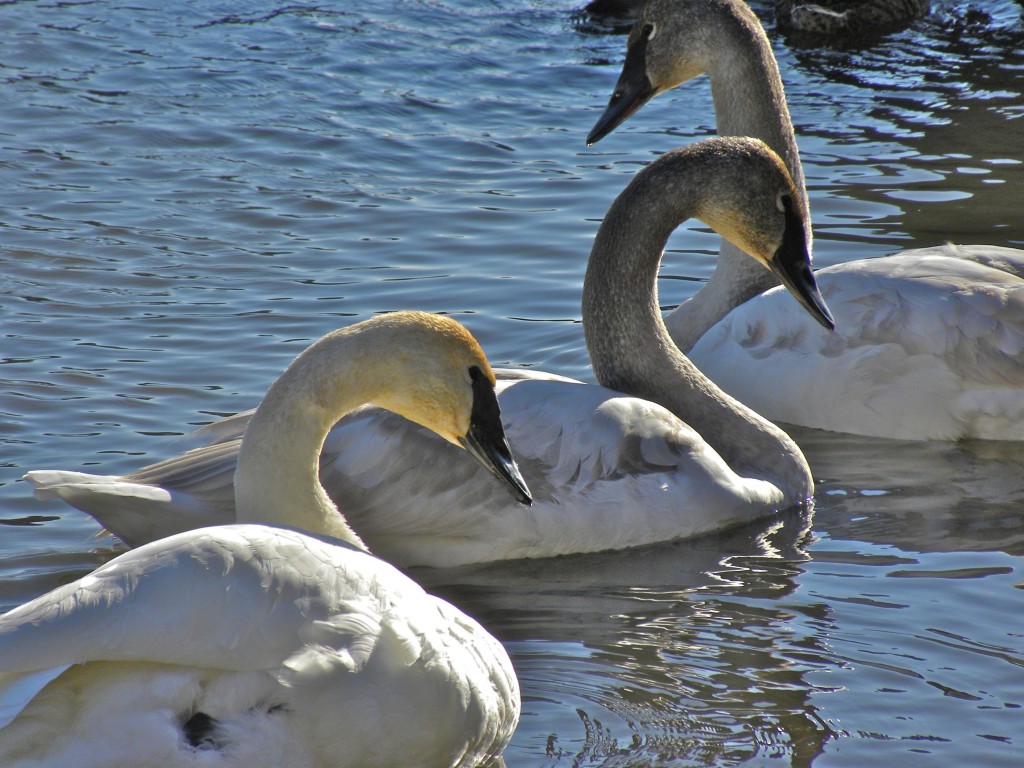
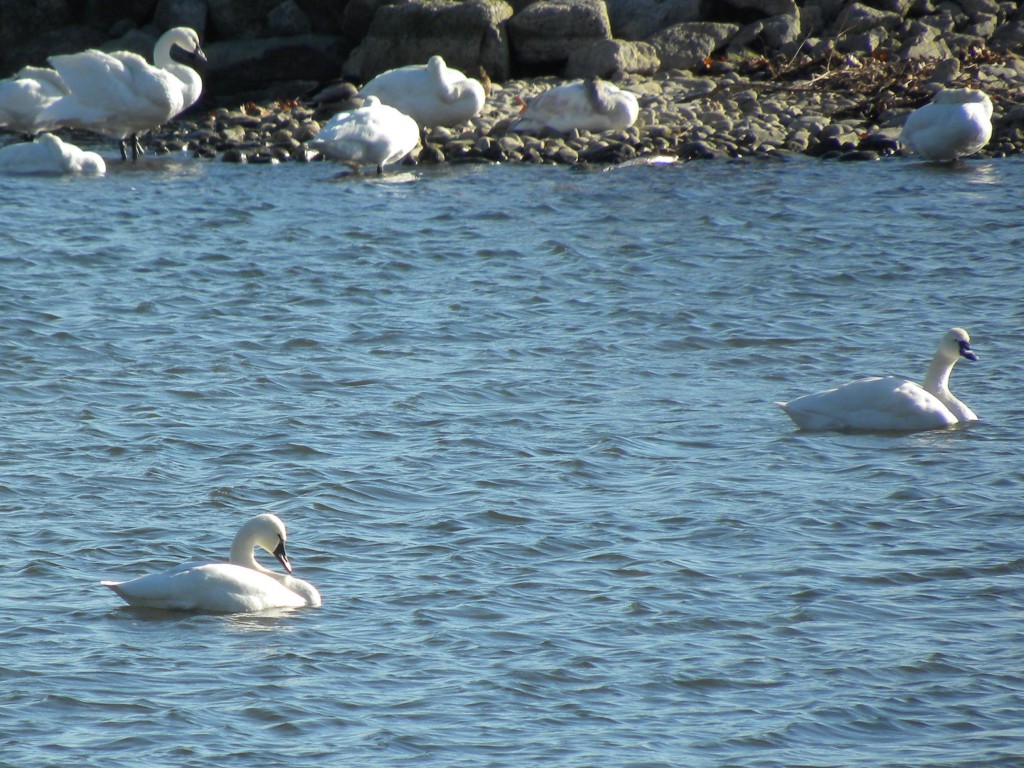
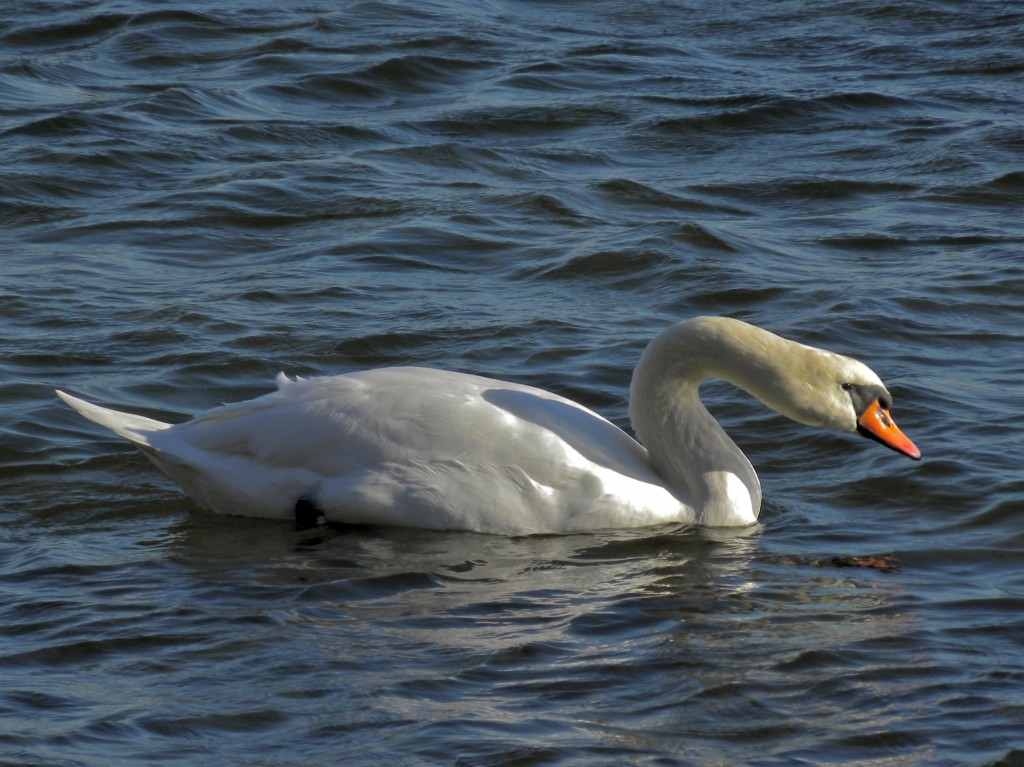
[slickr-flickr tag=”swans”]
